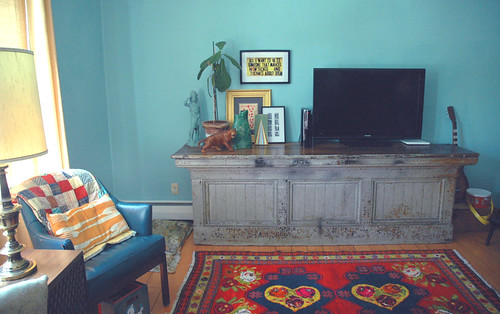Website analytics explained
Page views on first, visits on second? Or is it hits on first, visitors on second? Actually, it's more likely that “I don't know!” is on third.
You've probably heard the famous Abbott and Costello “Who's on First!“ skit and felt like Costello when it comes to the best way to assess website performance. As the owner/operators of a website whose function is to advertise for businesses and inform users of those businesses, knowing the traffic our website receives is of vital importance to us. We are frequently asked “How many hits do you get?” We have an answer to that question but the real question is would that be the right answer? Very likely, it's not the right answer because it's the wrong question. Please allow us to explain.
As we previously said, knowing the traffic that a website recieves is vitally important. In fact, it's everything. Enter analytics. Website analytics is a compilation of data and statistics which analyze and report on the performance of a website. Michigan Antiques Directory is currently using Google Analytics. There are a number of components that make up the analytics of a website: hits, visits, visitors, page views, page views per visit and more. Let's start with definitions.
Hit
Definition: A hit on a website is counted when its web server serves a file. A hit can be any type of file that is downloaded to your browser that makes up the web page you are viewing: images, Java applets, JavaScript files, the html file itself; all the components of that web page.
Example: If a website has one page containing 49 images, every visitor to that page registers as 50 hits on the server (49 images plus the HTML file). This means that 50,000 hits translates to just 1,000 visitors to that website.
Therefore, looking at the hits a website gets within a given time period is misleading. This is the least useful metric by which to measure the traffic on a website.
Visit
Definition: A visit represents an individual session initiated by a visitor to the website from a unique IP address (your computer). A period of time is used to determine when another visit is logged by the original visitor. Google Analytics sets that period at 30 minutes.
Example: Whether a visitor is moving about your site or not during that 30 minute time period is irrelevant. The next time that visitor accesses the website, another visit is counted.
This is much more useful than hits but, depending on the period of time used, this metric doesn't give a good picture of what the visitor is doing.
Visitor
Definition: A visitor is defined as any individual that comes to your website from a unique IP address over a period of time, typically a month.
Example: If John Doe came to your website 10 times over the last month, that would be 10 visits but only 1 visitor.
This metric can be useful but unless we know what that visitor was doing it is still just another number.
Page Views
Definition: A pageview is defined as a view of a page on the website that we are able to track.
Example: When a visitor accesses a page, this is one page view. If that visitor clicks refresh after reaching the page, this is counted another pageview. If that user navigates to a different page and then returns to the original page, two more pageviews are recorded.
We're getting better information now. We can see that the visitor is using the web site now ie. spending time on it. This is something to track and compare to other sites.
Unique Page Views
Definition: A unique pageview counts and totals the pageviews that are generated by the same visitor during the same session.
Example: A unique pageview represents the number of sessions during which that page was viewed one or more times.
This metric simply filters out duplicate page views for the same visitor. It is not as useful as it sounds.
Page Views per Visit
Definition: The number of page views on average that a visitor viewed during their visit. This average is usually generated from the page views and visits identified for a given month.
Example: For a given month, 800 visits occurred resulting in 3200 page views. The average of these numbers equals 4 page views per visit for that month.
This is the number that really matters! Having a large number of visitors that only look at the home page will result in a ratio closer to 1. Having visitors that view multiple pages of a web site will result in a ratio like 3 or 4 or 5 or .. 10! Now we are talking!
Conclusion:
It is important for a webmaster to attrack new visitors to the website. More importantly, the webmaster strives to motivate a visitor to view as many pages as possible before exiting the website. Thus, from a visitor experience point of view, page views are a much more important indication of website quality than hits.
The ratio of page views to visits is the most accurate metric for judging the experience of any single visitor to the web site. A ratio much larger than 1 implies that a web site is doing a great job of maximizing the website experience of the visitors by getting them to view more than one page. It also translates to higher average time on site for each visitor - a clear indication that the website is serving the correct content to the correct type of visitor.
All this being said, here is the answer to the question "How many hits do you get?" Michigan has 83 counties. Therefore, Michigan Antiques Directory has 83 county pages. We have 14 additional pages for a total of 97 pages. Let's assign a number of 50 files on any given page. Some pages will have more, some will have less but let's use 50. If you came to our website and looked at 5 pages on our site, your ONE visit would generate 250 hits. This means that 1000 visitors would generate 250,000 hits. Wow! Sounds good until you understand what it really means.
All this being said, here is the answer to the question "How many hits do you get?" Michigan has 83 counties. Therefore, Michigan Antiques Directory has 83 county pages. We have 14 additional pages for a total of 97 pages. Let's assign a number of 50 files on any given page. Some pages will have more, some will have less but let's use 50. If you came to our website and looked at 5 pages on our site, your ONE visit would generate 250 hits. This means that 1000 visitors would generate 250,000 hits. Wow! Sounds good until you understand what it really means.
The bottom line is this: hits on a website does not indicate the actual traffic that the website receives. Don't be deceived by this metric. The most useful metrics are visits and pageviews per visit. This will give us an indication of how many PEOPLE are visiting our website and WHAT they are doing while they are there.
Best regards,
John & Leslie






